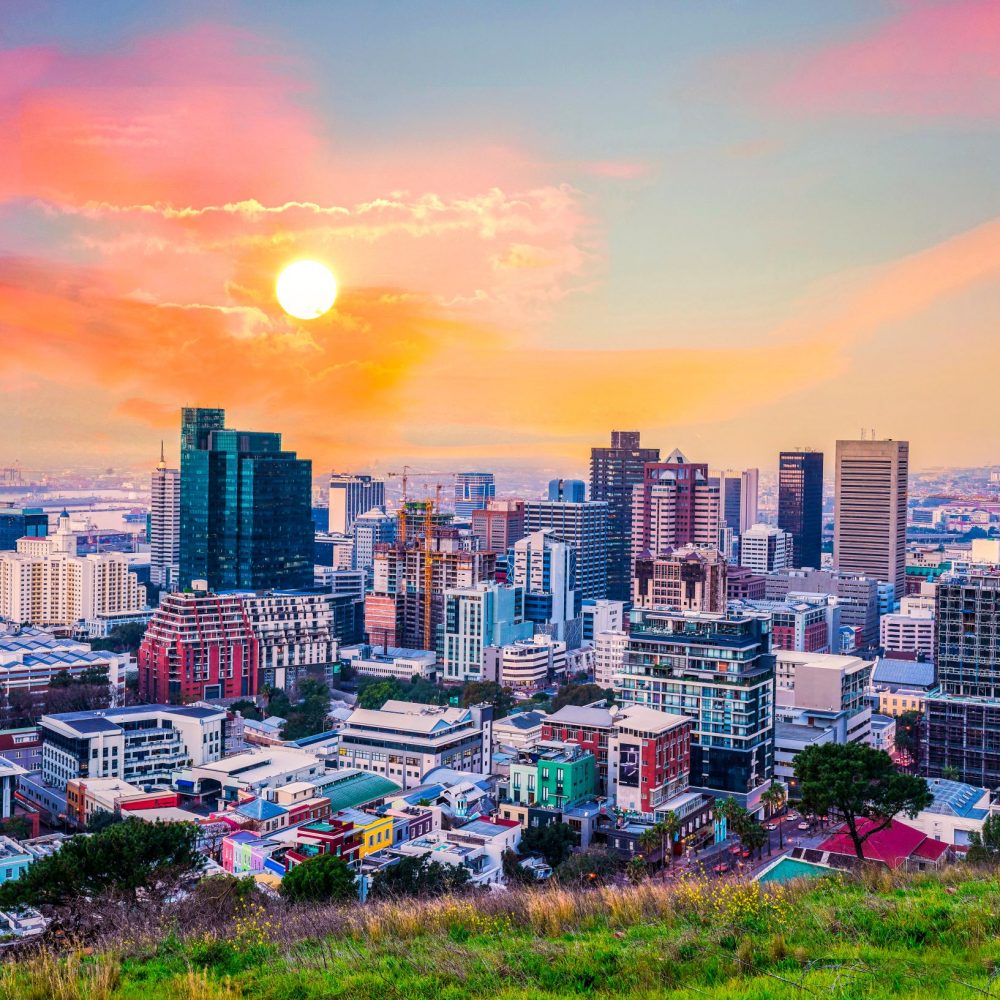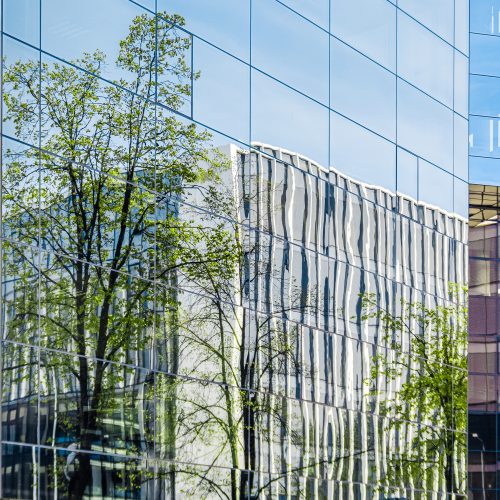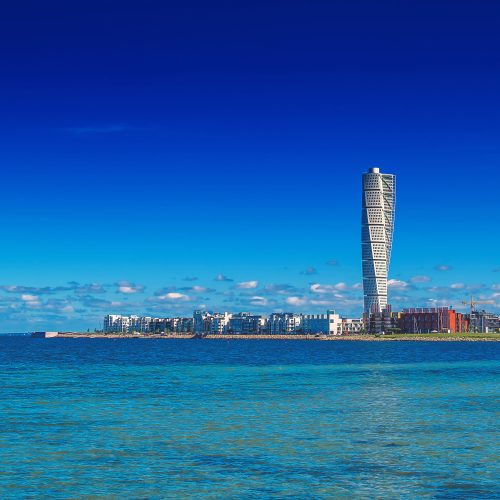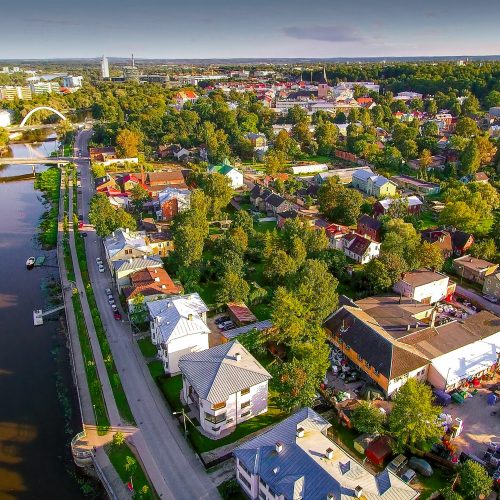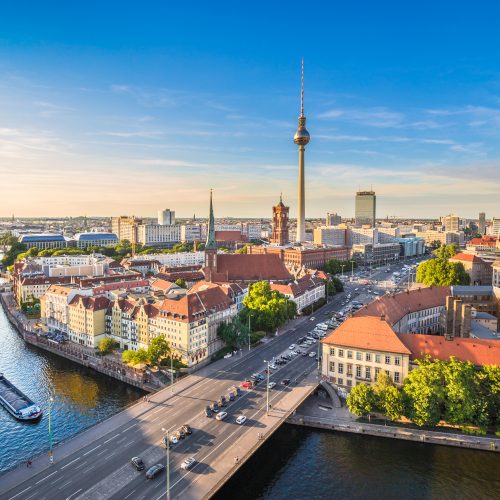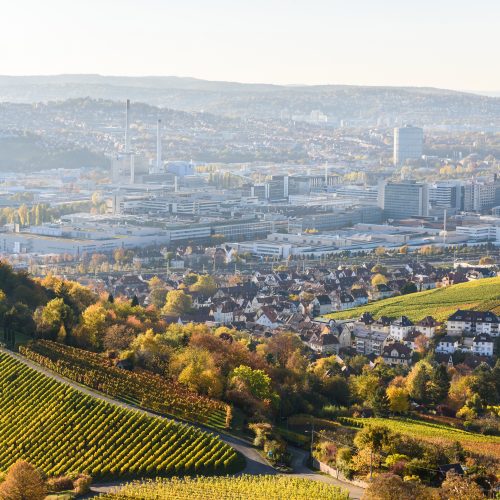Context and policy overview
After the end of apartheid in 1994, dismantling the discriminatory structures embedded in South African society required a reconfiguration of the fundamental design of cities, starting with land rights and housing.
Black South Africans had officially been denied the right to own land since 1948 and had been relegated to segregated townships away from the city centre.
The townships were extremely densely populated, lacked proper access to essential infrastructure for transportation and sanitation and, as a result, were cut off from economic opportunities.
To tackle this challenge, in 1994 the newly elected African National Congress (ANC) instituted a subsidised housing initiative called the Reconstruction and Development Programme (RDP).[1] The RDP aimed to create over 2 million housing units for Black South African families by 2005 across South Africa.[2]
In Cape Town, this project was particularly needed, since 32 per cent of the population lived in poverty and lacked formal housing.
The houses built through this initiative, however, lacked insulated ceilings and were not able to suitably maintain internal temperatures.
The lack of insulation meant higher energy costs for residents. More importantly, the persistent humidity and cold temperatures caused by the ineffective insulation presented a health hazard for residents who became increasingly susceptible to tuberculosis and other diseases affected by the cold and high moisture levels.
To address this issue, the City of Cape Town launched a ceiling retrofitting campaign in 2010 for RDP houses to reduce greenhouse gas emissions and ensure that people in subsidised housing were afforded adequate living arrangements.
The project was also in line with objectives set out in the City of Cape Town Climate Action Plan, which included a 10 per cent city-wide reduction in electricity consumption; building resilience to climate change impacts in low-income communities; and local economic development involving the energy sector.[3]
Implementation
The retrofitting programme involved installing insulated ceilings and exterior plastering. The City initially ran two pilot projects – in Mamre and Kuyasa – which involved several hundred houses on the outskirts of Cape Town.[4] Other than seeking to assess the feasibility of the project, the pilots were designed to assess whether residents would prefer to have solar water heaters installed or insulated ceilings and plastered exteriors.
The Mamre pilot, in which 240 ceilings were retrofitted, was managed by the Energy and Climate Change (ECC) Unit (now called the Sustainable Energy Markets’ Low Income Energy Services Branch), hosted in the Environmental Resource Management Department, while the Kuyasa pilot (involving 2,300 homes) was handled by an NGO, SouthSouthNorth, under the supervision of the ECC.
Funding for the Mamre pilot came from the Danish International Development Assistance Urban Fund, which allocated 1.9 million South African rand (around €110,000). The retrofitting work itself was managed through the Expanded Public Works Program, hosted in the national Department of Public Works, through which municipalities could apply for funding. For the Kuyasa project, funding came through the Department of Environment and Tourism’s Social Responsibility Programme and the provincial government’s Department of Housing.
Before the project was implemented, consultations were held with community members to integrate the voices of key stakeholders into the project’s design.[5] A community volunteer committee was established and training was provided to committee members. The stakeholder engagement was designed to supplement the statistical evidence on the project’s effectiveness compiled through climate risk assessment and post-intervention evaluations.
After the pilot ended, survey evidence showed that both energy and health outcomes were improved as a consequence of the retrofitting. In Mamre, the post-intervention evaluation involved interviews with 25 residents and surveys distributed to 140 of the 240 households who benefitted from the programme. Local stakeholders, such as district nurses, were also included to capture the impact of the project across the community.[6]
Ultimately, the pilot was also instrumental in determining that residents preferred ceiling retrofitting to solar water heaters, due to the latter’s high installation and maintenance costs, and risk of failing.
After the pilot, the retrofitting programme was managed by the ECC and largely followed the same model as the pilot, excluding the solar water heater component.
The programme attracted national and international attention, which allowed it to be sustained through increased funding. The City of Cape Town acquired additional resources through South Africa’s Green Fund, a resource pool for projects aimed at reducing greenhouse gas emissions.[7]
This subsequent round of retrofitting involved 8,000 ceilings in communities outside Cape Town’s city centre between 2014 and 2017. In addition, the second iteration of the project featured educational components; residents were given training on how to live healthier and more sustainable lives and a workforce development programme organised by the National Urban Reconstruction and Housing Agency focused on women and young people.[8]
Barriers and critical success factors
The multi-dimensional nature of the project itself was important in determining its success. In fact, the City of Cape Town sought to address several issues through this initiative, specifically tying climate objectives to social outcomes. By focusing on ceiling retrofitting in subsidised housing, the City was able to tap into sources of funding, such as South Africa’s Green Fund, allocated for green projects, while also promoting inclusion and social justice. The energy savings themselves improved the welfare of affected low-income communities as a lower share of their income was then allocated to utilities.
What is more, the programme was tied to another issue faced by the municipal and national governments, namely high unemployment rates. By making the Expanded Public Works grant contingent upon hiring local labour, the government also sought to boost employment rates. In this way, the City of Cape Town showed how synergies across different issue areas can be addressed through one programme.
Importantly, however, a mismatch remained between the retrofitting policy promoted by the ECC at the municipal level and the operations of the RDP at the national level. It was not until 2015, in fact, that all new houses built through the RDP were required to have insulated ceilings.
Given that retrofitting is more resource-intensive than building homes with proper insulation in the first place, the retrofitting programme may have contributed to a shift in policy priorities at the national level as well.
Results and lessons learned
The installation of insulated ceilings in homes built under the auspices of the RDP had a significant positive impact on energy consumption and residents’ health.
On the energy side, insulated ceilings have reduced fuel use by 74 per cent during the winter months, leading to savings for low-income residents and reduced greenhouse gas emissions. It is estimated that the retrofitting programme saves 7,400 tonnes of CO2 emissions a year.
Survey evidence also found a reduction in diseases aggravated by cold temperatures, such as tuberculosis. Of the households surveyed in the Kuyasa project, 81 per cent reported a decrease in the frequency of illness.[9] A separate survey conducted in Mamre found that 67 per cent of households noticed a difference in family health after the ceiling installation.[10]
While the energy savings and social benefits that were seen in Cape Town led to the national RDP being revised to include better housing insulation, it should be noted that the retrofitting programme did not address an important underlying issue in Cape Town: the persistent lack of housing.
The acute housing shortages led some residents to sell their RDP houses, from which it is not possible to conduct commercial activities, and use the money to support themselves while living in an informal settlement.[11]
Therefore, while the retrofitting programme has had a positive impact on residents, it is also possible that the poorest segments of the population may not have benefitted to the same degree as less resource-constrained individuals. In some cases, informal settlements were still preferred by Cape Town’s low-income residents in lieu of the RDP housing options.
Several important considerations can be drawn from Cape Town’s experience with affordable housing and retrofitting programmes.
- Climate objectives and social goals can reinforce each other. To this end, synergies between the two should be identified and leveraged for greater impact.
- Policy objectives should be coordinated across all levels of government to ensure that the policies implemented across the country are coherent with each other. In this case, the retrofitting programme should have been pursued in tandem with stricter insulation requirements for new buildings.
- Pilot programmes can be used to assess the feasibility of a project but also to assess the end-users’ satisfaction and, where possible, tailor the project’s structure to their preferences.
- Cape Town’s experience with subsidised housing demonstrates that adequate standards in housing quality should be a priority for policymakers.








